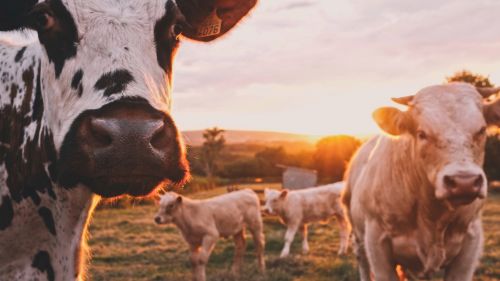How Animal Agriculture can Fill the Hunger Gap that COVID-19 is Fast Widening

Animal agriculture has faced challenges around distribution and processing during the pandemic restrictions, but if safely managed, animal-sourced foods can be a powerful force against global hunger.
While the ongoing Covid-19 pandemic, rising unemployment, and social unrest relentlessly dominate global headlines, growing food insecurity is quietly becoming one of the deadliest threats facing the world today.
In a warning that 265 million people could face acute food insecurity this year, the UN’s World Food Program identified conflict, climate change, and economic crises as associated factors exacerbating hunger in low and middle-income countries.
Yet hunger and food insecurity is not limited to the global south. The coronavirus outbreak has generated the kind of shock to America’s food system that is much more familiar in low-income countries, where families live closer to the edge of vulnerability with fewer safety nets.
The pandemic will almost certainly result in one of the biggest economic recessions in history, threatening the livelihoods of millions of Americans as joblessness reaches almost 15 percent.
There were already 37 million food-insecure Americans in 2018—more than one in 10 people going hungry. But as the pandemic continues to devastate the economy and essential social support systems, up to 17 million more may be facing food insecurity in the months to come.
In the US, at least, supply is not a major challenge. Thanks to the work of American farmers and producers, there is no shortage of healthy animals, and the US enjoys some of the world’s highest standards for both food quality and safety.
Recent assertions about the safety and sustainability of livestock—including going as far as linking animal agriculture to the coronavirus outbreak—can be misleading or even false, and could risk detracting from the nutritional benefits that animal-sourced foods can provide.
This is precisely why I joined more than 75 others in signing an open letter to call for greater action from policymakers: to ensure that families have the facts about our food supply and understand that it is safe.
But like many other countries worldwide, animal agriculture has faced challenges around distribution and processing during the pandemic restrictions. Getting livestock to a slaughterhouse in the limited time frame for maximum quality and weight has been problematic at times due to plant closures.
Without more support from local government, policymakers, and the public, animal agriculture risks becoming a missed opportunity to support families worldwide through the Covid-19 crisis and subsequent hardships.
Globally, 1.3 billion people depend on livestock for their employment, while billions more rely on livestock to provide food for their families.
With many plants still shuttered, farmers are facing huge obstacles to get their products into the food supply chain and to consumers. Channels and access for food sales must be expanded to ensure these goods reach the people who need them—and limit the food going to waste.
Ensuring that regulations facilitate – rather than hamper—direct sales to consumers is essential while continuing federal food procurement programs and supporting food banks to source supplies straight from farms will also help struggling families access healthy food during this crisis.
And crucially, farmers themselves must not be forgotten. Recognizing food and agriculture workers as essential was an important step. But to adapt to the “new normal” forced on them by the pandemic, farms and plants also need ongoing support to introduce new working practices that help protect their employees and maintain supplies in these challenging and uncertain circumstances.
Promising progress has been made in the US, for example, with the USDA providing millions of face masks to workers, while the CDC and OSHA have issued new guidance to allow farms and plants to do everything in their power to try to ensure the health and safety of meat and poultry processing employees. But critical support like this must be maintained, not only to protect producers but ultimately to keep the food supply chain moving.
In the face of financial hardships, labor shortages, and continuing uncertainty, farms, processing plants, and other animal agriculture actors are already taking unprecedented measures—to protect workers, keep food on the shelves and support local communities.
However, the sector cannot evolve and adapt to new threats like coronavirus alone—sustained support is imperative. Raising public awareness about the benefits of animal agriculture is the cornerstone of this support and will not just help farmers, but the rising number of people facing growing food insecurity too.
The question is therefore not whether the animal agriculture sector can help fill this widening hunger gap with nutritious, healthy food—we already know it can. It is: how can we best support our farmers to support our people and our economy?